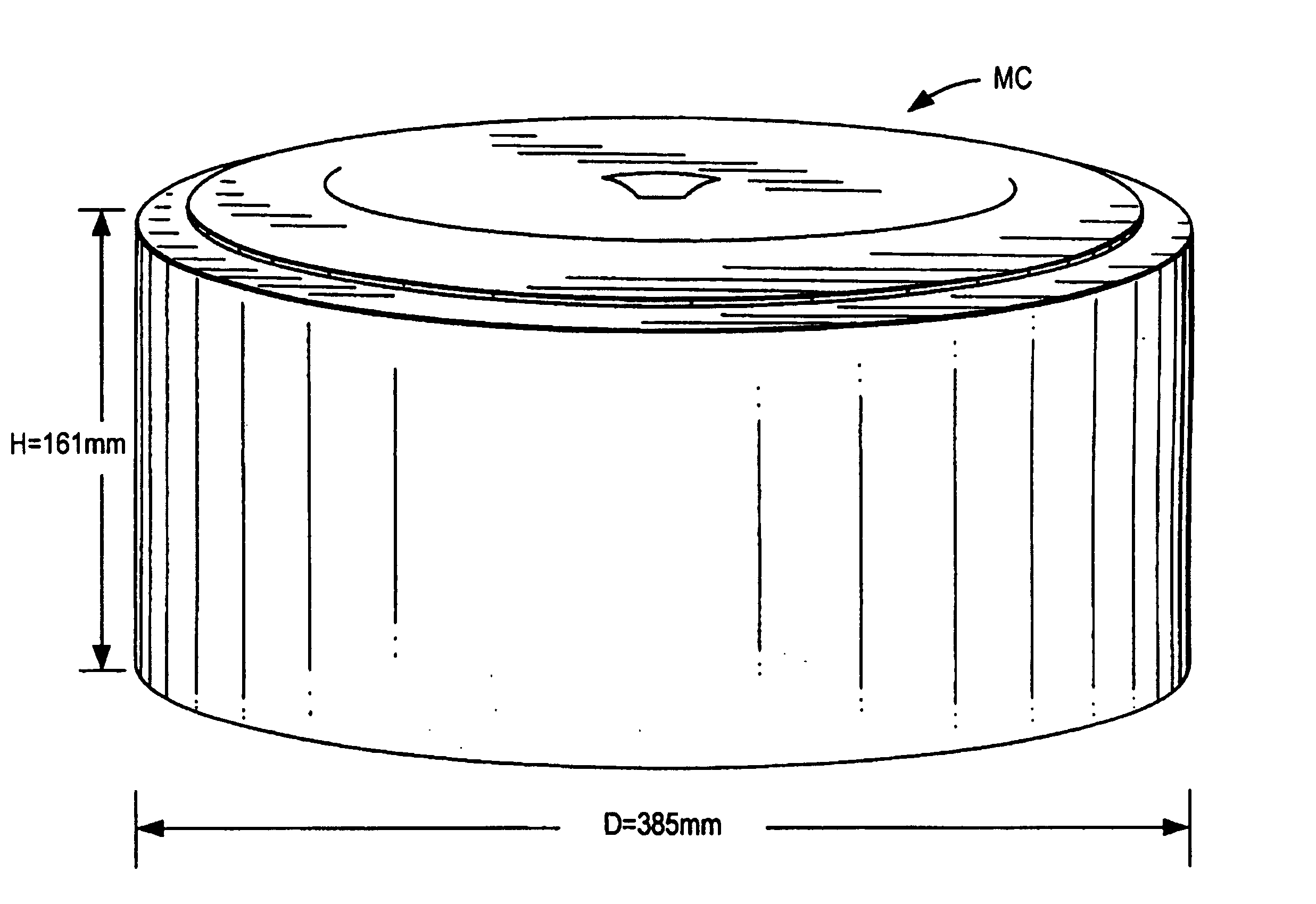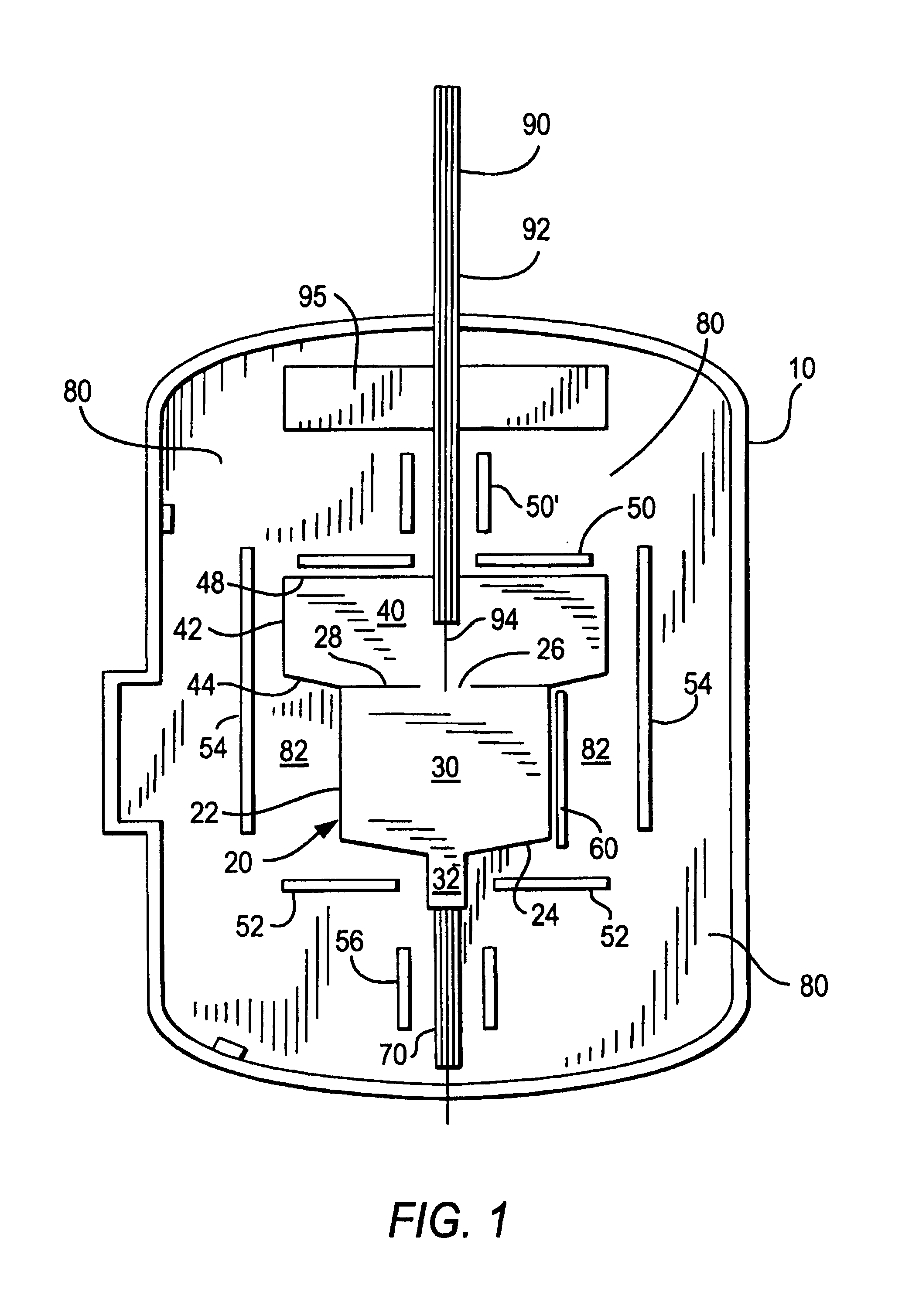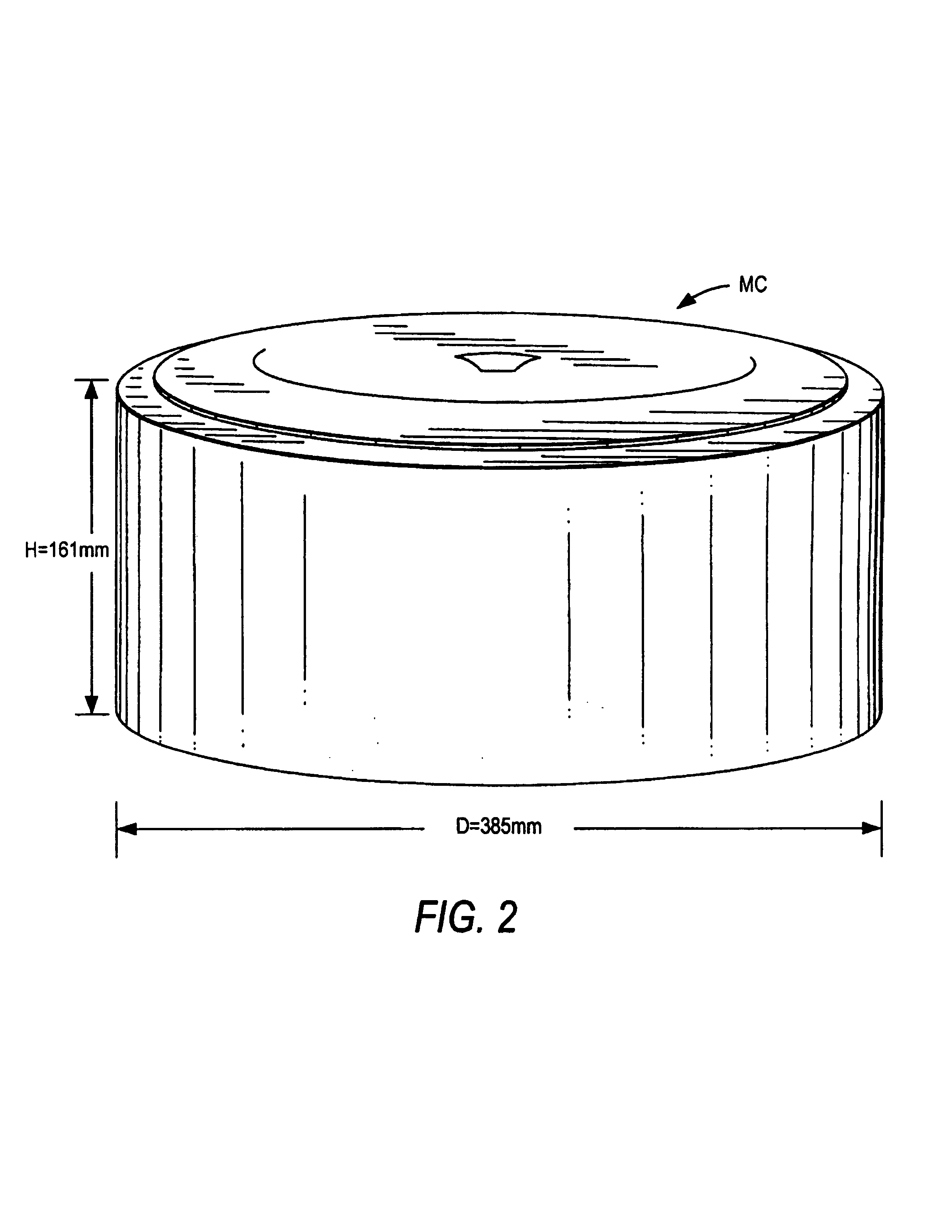Method and device for growing large-volume oriented monocrystals
- Summary
- Abstract
- Description
- Claims
- Application Information
AI Technical Summary
Benefits of technology
Problems solved by technology
Method used
Image
Examples
example 1
[0054]To produce a calcium fluoride monocrystal, inner space 30 of melting vessel 20 was filled with a calcium fluoride mixture, which in addition contained scavenger materials with high affinity for oxygen, such as PbF2, SnF2 or CdF2. The device was then closed with a cover not shown in FIG. 1 and was flushed with nitrogen as inert gas to remove the undesirable atmospheric oxygen. A vacuum of 10−4 mbar (10−2Pa) was then applied and, while cooling the seed crystal well 32, cover heater 50, 50′, bottom heater 52 and optionally jacket heater 54 were put in place and slowly heated to 1450° C. over a period of several hours. The melt was then homogenized at this temperature for five days while maintaining convection in it. After the homogenization, the bottom heater temperature was reduced to a temperature of 1200° C., and the seed crystal was carefully melted with the aid of seed crystal well heater 56. After turning off the seed crystal well heater, cover heater 50, 50′ was kept const...
PUM
 Login to View More
Login to View More Abstract
Description
Claims
Application Information
 Login to View More
Login to View More - R&D
- Intellectual Property
- Life Sciences
- Materials
- Tech Scout
- Unparalleled Data Quality
- Higher Quality Content
- 60% Fewer Hallucinations
Browse by: Latest US Patents, China's latest patents, Technical Efficacy Thesaurus, Application Domain, Technology Topic, Popular Technical Reports.
© 2025 PatSnap. All rights reserved.Legal|Privacy policy|Modern Slavery Act Transparency Statement|Sitemap|About US| Contact US: help@patsnap.com



